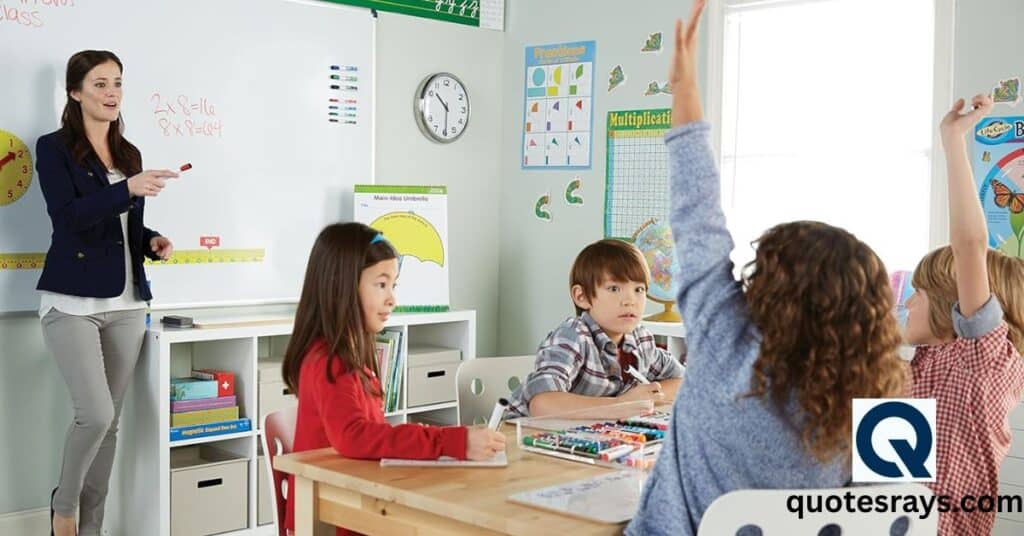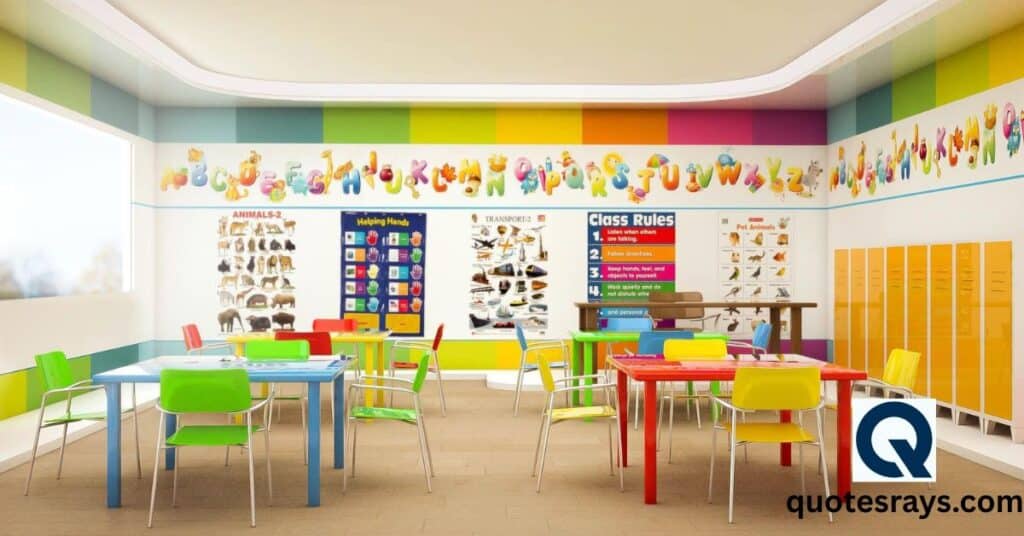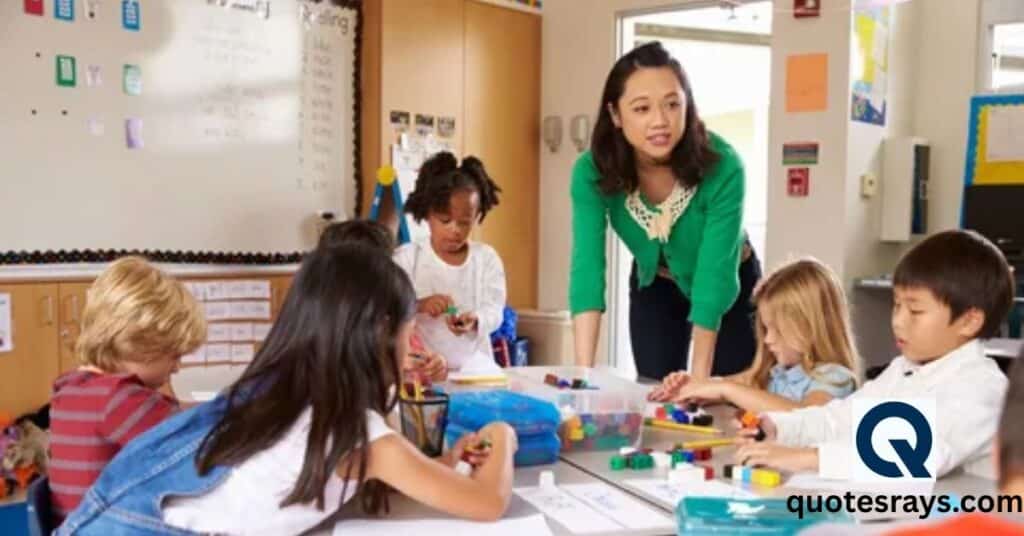Creating a well-organized and visually appealing classroom wish list can be a game-changer for teachers, especially at the start of the school year. A wish list helps communicate your classroom needs to parents who may be willing to donate supplies. Below, you’ll find helpful tips on setting up a wish list, making it more effective, and ensuring you receive the right materials. Additionally, you can download a free editable printable to create a decorative wish list for your classroom bulletin board, door, or wall display. Classroom Wish List: A Guide for Teachers
A classroom wish list allows teachers to request necessary supplies that can enhance the learning experience for students. Parents often want to contribute but may not know exactly what is needed. By providing a clear and organized list, you make it easier for them to help. Classroom Wish List: A Guide for Teachers
Setting Up a Classroom Wish List for Parent Night

One of the best times to introduce your classroom wish list is during Open House or Parent Orientation. At the beginning of the school year, parents are more likely to donate supplies to help set up a successful learning environment for their children. Classroom Wish List: A Guide for Teachers
- Write down each desired item on an individual paper shape (such as a star, apple, or sticky note).
- Post these shapes in a visible area, such as a bulletin board, classroom entrance, or parent communication area.
- Parents who want to contribute can take a shape home as a reminder and later send the item to school.
This method not only makes the process interactive but also ensures that donations are distributed among different parents, preventing duplicates or unnecessary items.To make the wish list more attractive and engaging, consider using a printable banner or poster. You can customize it with fun designs, bright colors, and easy-to-read text. Download our free editable wish list template to save time and create a professional-looking display. Classroom Wish List: A Guide for Teachers
Be Specific About Wish List Items
One of the most important aspects of a classroom wish list is clarity. If you are vague about your needs, you may end up receiving items that are not useful. Here are some key tips to ensure you get exactly what you need:
- Include Brand Names When Possible: If a specific brand or type of item is required (e.g., Crayola crayons, Elmer’s glue, Ticonderoga pencils), mention it. Some brands are more durable or suitable for classroom use than others.
- Attach Pictures: If possible, include an image of the requested item. This helps avoid confusion and ensures parents pick up the right product.
- Specify Quantity and Type: Instead of just writing “Paper Plates,” clarify whether you need small, large, or uncoated plates. Without details, you might receive styrofoam, plastic, or wax-coated plates that don’t suit your needs.
To keep donations organized and avoid mix-ups, consider the following:
- Write your name on each wish list card, either on the front or back.
- Some parents have multiple children in different classes, and they may forget which item goes to which teacher. Labeling helps ensure that donated items reach the right classroom.
- If space allows, write additional details on the back of each card to provide further clarification.
While some parents are eager to contribute, others may need a little encouragement. Here’s how you can increase participation:
- Express Gratitude: A simple Thank You note or a small recognition (like a shout-out in a newsletter) can go a long way in encouraging donations.
- Offer a Variety of Price Points: Not all parents have the same budget. Include a range of inexpensive and higher-cost items so everyone can contribute in their own way.
- Remind Parents Gently: A friendly reminder via email, social media, or a take-home flyer can increase participation without making parents feel pressured.
Essential Supplies for a Fun
As a teacher, I often rely on the generosity of parents and guardians to help provide essential supplies for my classroom. These materials contribute to a dynamic and interactive learning environment where students can explore, create, and engage in hands-on activities. While I don’t ask for all these items every year, here is a list of things I have requested over time. Classroom Wish List: A Guide for Teachers
- Batteries – AA size (used for classroom gadgets and learning tools)
- Ziplock Bags – Available in sandwich, gallon, and snack sizes (great for organizing small items, storing classroom supplies, and science experiments)
- Cotton Balls – Useful for art projects, sensory activities, and science experiments
- Color Printer Ink Cartridges – To print worksheets, creative materials, and colorful resources for students
- Cardstock Paper (White & Colored) – Durable for crafts, flashcards, and posters
- Colored Pencils – Encouraging creativity in art and assignments
- Disposable Bowls – Used for science experiments and classroom cooking activities
- Clear Disposable Punch Cups – Helpful for mixing colors, measuring liquids, and sensory play
- Glitter Glue – Adds a creative touch to art projects
- White Paper Plates (Large & Small) – Useful for crafts and experiments
- Colored Sand – Engaging for sensory bins and creative projects
- Food Coloring – Enhances science experiments and art activities
- Baking Soda & Vinegar – Essential for exciting science projects like volcano eruptions
and Engaging Learning Experience
- Clorox or Lysol Wipes – Helps maintain a clean and germ-free learning space
- Lysol Spray – Keeps the classroom fresh and sanitized
- Mr. Clean Magic Erasers – Perfect for cleaning desks, whiteboards, and art messes
- Old Magazines – Preferably with pictures of animals for collages and projects
- Paper Lunch Bags (White & Brown) – Useful for craft activities and storage
- Pastel Colored Copy Paper – For printing worksheets and creative projects
- Craft Pom Poms – Fun for decorating and art projects
- Wiggle Eyes – Adds personality to craft creations
- Pipe Cleaners – Versatile for art, modeling, and hands-on learning
- Play Dough – Encourages creativity and fine motor skills
- Crayola Model Magic – A specific type of soft modeling clay (I usually provide details on the exact amount, where to buy it, and the cost)
- Q-tips – Great for painting, cleaning, and art detailing
- Poster Board (White) – Ideal for group projects, presentations, and visual displays
- Tissue Paper (Assorted Colors) – Used for crafts, decorations, and sensory activities
- Unwanted Baskets or Wooden Bowls – Useful for classroom storage and organization
Show Appreciation: A Simple Thank You Goes a Long Way!
Once parents send in donations, it’s important to express gratitude. A simple “Thank you for the play dough” or “We appreciate the colored pencils” makes a big difference. If you want to make it more special, you can print out a Thank You Note from the printables section below and send it home with the students.Your support makes a world of difference in the classroom, helping children learn, create, and thrive!
Setting up a classroom can be an exciting yet challenging task, especially when it comes to gathering essential supplies. A well-equipped classroom contributes to a positive learning environment, enabling students to stay engaged and focused. However, teachers often find themselves in need of additional materials throughout the school year. A Classroom Wish List is a fantastic way to communicate these needs to parents, guardians, and the community in an organized and visually appealing manner.Classroom Wish List: A Guide for Teachers
To make this process easier, we have created a free Classroom Wish List printable set, which includes a Wish List Banner and a Thank You Note. This printable set allows teachers to clearly display their classroom needs while also expressing gratitude to those who contribute.Classroom Wish List: A Guide for Teachers
How to Use the Classroom Wish List Printable

1. Print and Prepare Your Wish List Banner
- Download and print the Classroom Wish List Banner on high-quality paper or cardstock for durability.
- Cut out each banner piece carefully.
- Attach the banner pieces to a ribbon or string using mini clothespins, paper clips, or adhesive tape.
- Secure the banner on your classroom bulletin board, door, or any visible space where parents and visitors can easily see it.
2. Fill in Your Wish List Items
- There are two formats available:
- A printable PDF version that allows you to handwrite your classroom supply needs.
- An editable Google Sheets version that you can type into before printing.
- A printable PDF version that allows you to handwrite your classroom supply needs.
- List essential items such as markers, notebooks, tissues, disinfecting wipes, art supplies, or other materials that would enhance student learning.
3. Encourage Parent Participation
- Parents or guardians can browse the wish list and pull off a card with an item they’d like to contribute.
- This interactive method makes it easier for them to know exactly what is needed and prevents duplicate donations.
- Consider sending an email or classroom newsletter to inform parents about the wish list and how they can participate.
4. Use Bright Colors to Make It Eye-Catching
- Print the wish list cards on brightly colored paper to make the display stand out.
- Use decorative borders, fun fonts, and engaging visuals to make it more appealing to parents and students.
5. Show Gratitude with the Thank You Note
- Once parents or donors contribute items, use the included Thank You Note to show appreciation.
- A simple handwritten or printed note can go a long way in building positive relationships and encouraging future donations.
Benefits of Using a Classroom Wish List
1. Organization and Clarity
- Instead of verbally mentioning needed items or sending individual requests, a wish list serves as a clear and organized method of communication.
- Parents can see exactly what is needed at any given time.
2. Reduces Out-of-Pocket Expenses for Teachers
- Many teachers spend their own money on classroom supplies. A wish list helps distribute the cost among willing parents and community members.
3. Encourages Parent Involvement
- Parents appreciate knowing what they can do to support their child’s classroom experience. A wish list gives them a direct way to contribute.
4. Enhances the Learning Environment
- Access to extra supplies ensures that students have what they need to fully engage in classroom activities.
- Additional materials like art supplies, books, and educational games can enrich the curriculum and make learning more interactive.
Tips for Making Your Classroom Wish List More Effective
- Keep It Updated: Regularly check and update the list as items are received or as new needs arise.
- Be Specific: Instead of writing “Markers, specify “Expo Dry Erase Markers – Black, Blue, Red.
- Use Visuals: Adding small images or icons can make the wish list more engaging and easier to understand.
- Create a Digital Version: Consider making a Google Docs or Amazon Classroom Wishlist for parents who prefer online shopping.
- Express Gratitude Publicly: A simple bulletin board section thanking donors can encourage more participation.
By using this Classroom Wish List printable set, you can make it easier for parents to contribute while keeping your classroom well-stocked with essential supplies. Download your free Classroom Wish List Banner and Thank You Note today, and start building a stronger, more resourceful learning environment!
Conclusion
Creating a well-thought-out classroom wish list can significantly enhance the learning environment for both teachers and students. By carefully selecting essential supplies, leveraging community support, and utilizing online platforms, teachers can ensure their.
classrooms are well-equipped for success. A well-prepared wish list not only helps in organizing resources but also fosters a collaborative and engaging atmosphere. With thoughtful planning and support, every classroom can become a thriving space for education and creativity.
FAQs
What is a Classroom Wish List?
A Classroom Wish List is a list of essential and helpful supplies teachers need for their students. It helps parents and donors contribute effectively.
Why Should Teachers Create a Wish List?
It ensures that classrooms have necessary materials, reducing out-of-pocket expenses for teachers and enhancing student learning.
What Items Should Be Included?
Include basic supplies like notebooks, pencils, art materials, cleaning products, and tech tools to support learning activities.
How Can Parents and Donors Contribute?
They can purchase items directly from the list, donate funds, or share the list with others to gather support.
Where Can Teachers Share Their Wish List?
Share on school websites, social media, Amazon, DonorsChoose, or local community groups to reach more supporters.

“Quotes Rays” is a blog dedicated to sharing meaningful and inspiring quotations and wishes for every occasion. Whether you’re seeking motivational words to uplift your day or heartfelt wishes for special moments, “Quotes Rays” has something for everyone. From famous quotes by renowned personalities to thoughtful wishes for birthdays, anniversaries, and more, this blog aims to brighten your day with carefully curated content that resonates with readers from all walks of life.







